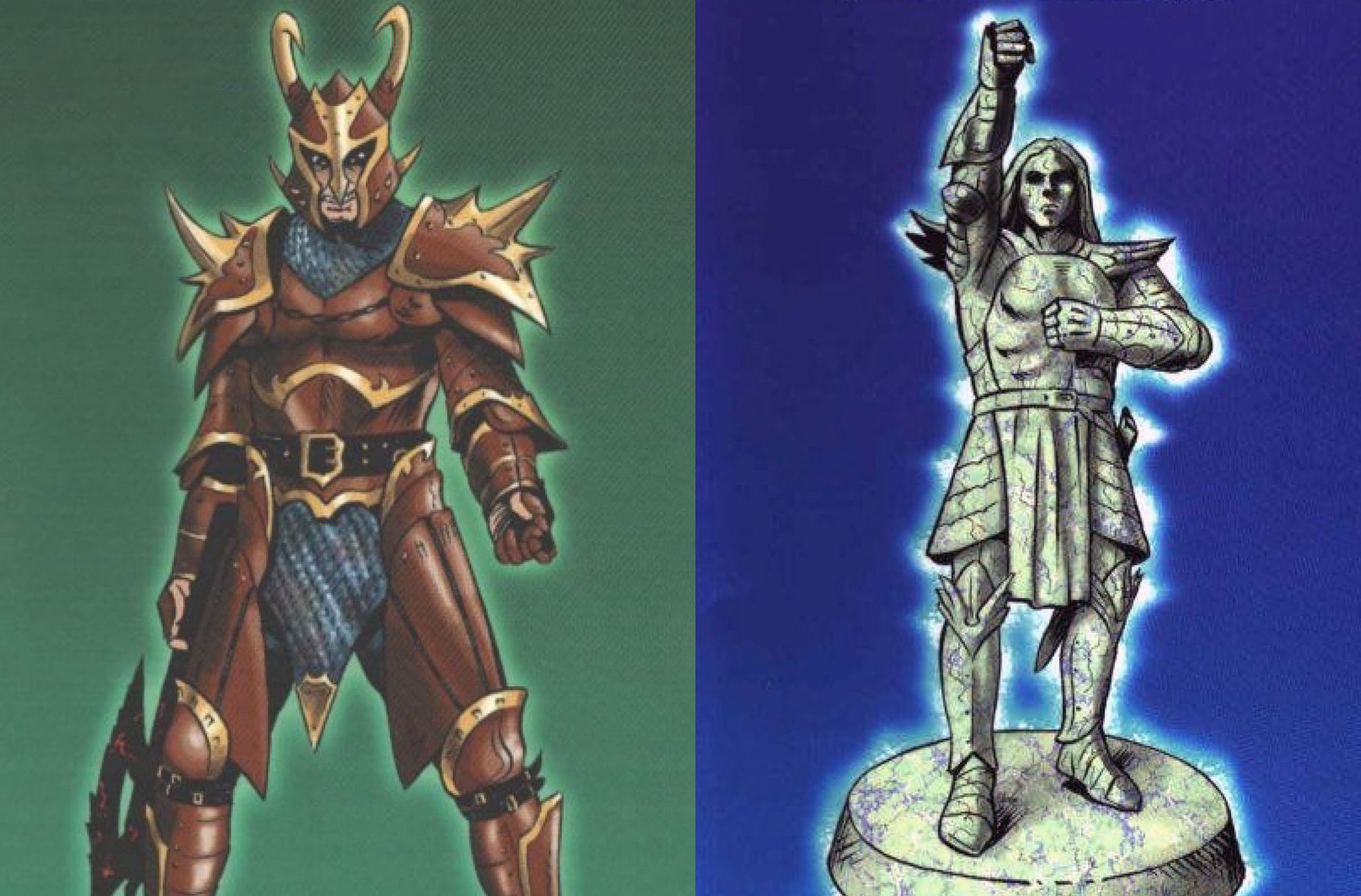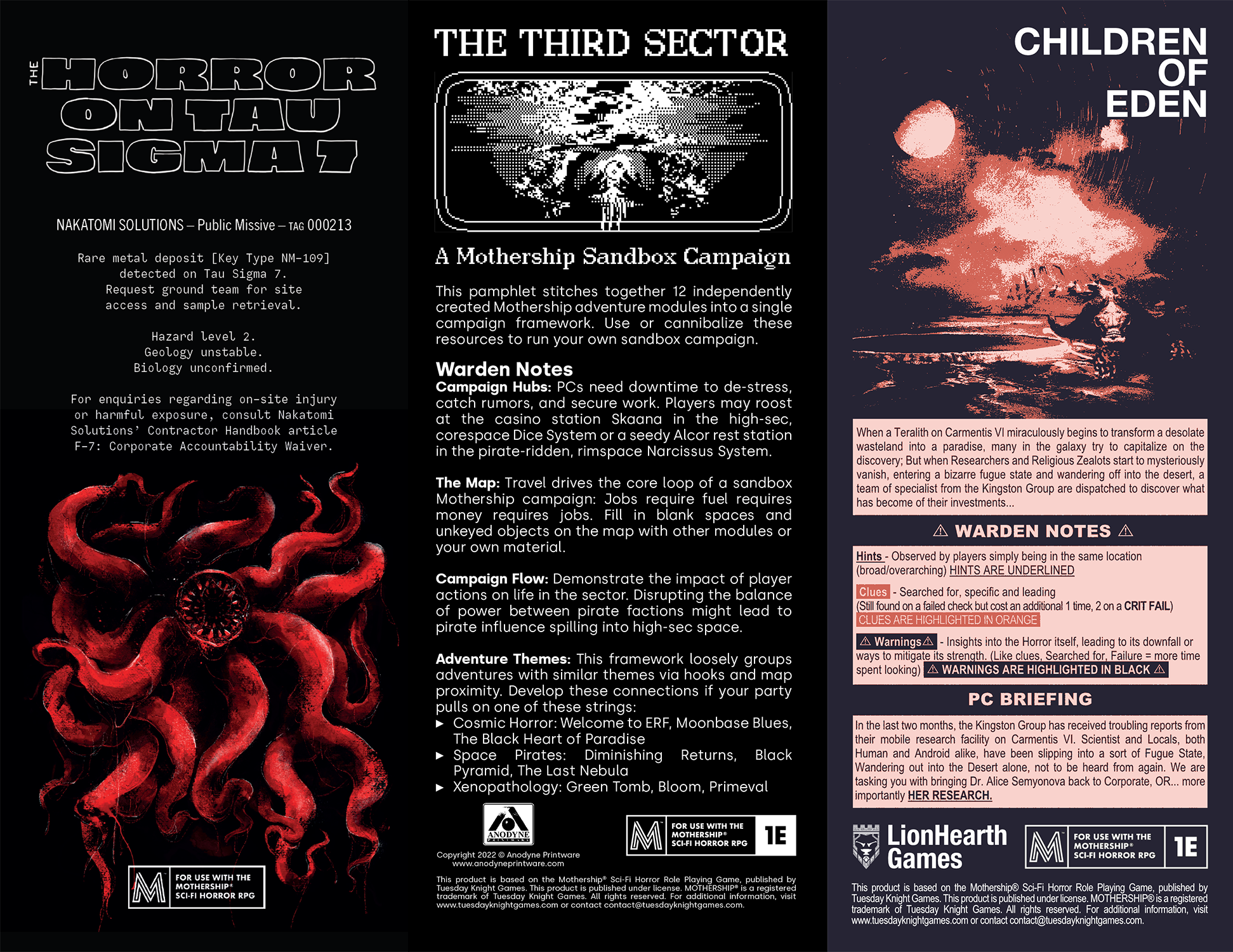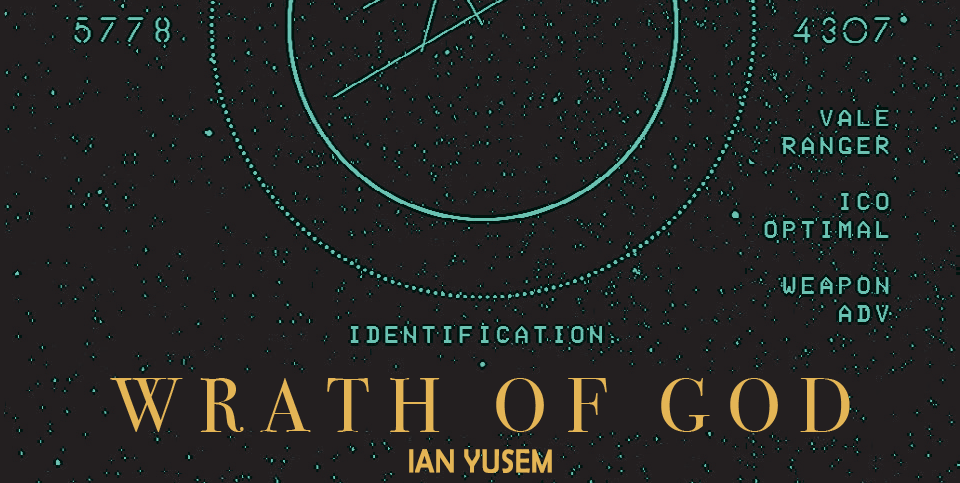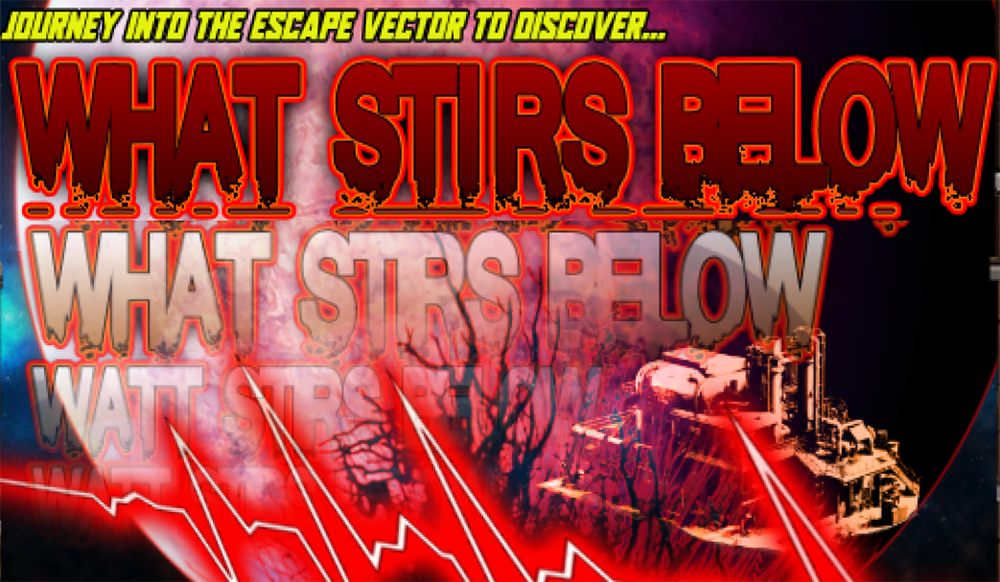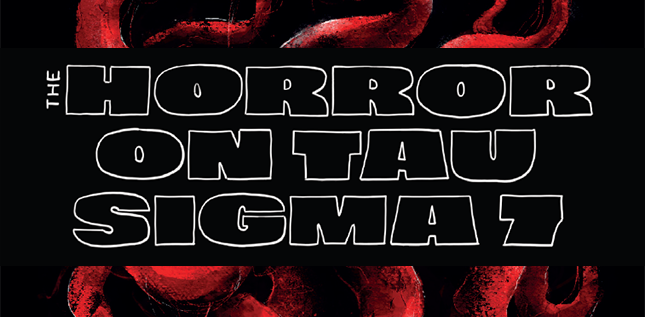Review Originally Published January 8th, 2001
Tomb of the Overseers and Against the Barrow King are the third and fourth D20 modules in AEG’s Adventure Boosters series. (The first two – Castle Zadrian and Sundered Faith – were reviewed previously.) To recap briefly: The Adventure Boosters are 16 half-pages long, with a map in the middle of the pamphlet, a new monster, and a new magic item. Eight of these Boosters have been released so far, and, at $2.49 each, they’re a great way to pick up a cheap, single session adventure for your gaming group.
Warning: From this point forward, this review will contain spoilers for Tomb of the Overseers and Against the Barrow King. Players who may end up playing in these modules are encouraged to stop reading now. Proceed at your own risk.
TOMB OF THE OVERSEERS
Tomb of the Overseers is an excellent, tightly constructed dungeon crawl. Surprisingly, despite its short length, it also has a definite – and effective – epic quality to it, which earns Ken Villars and John Zinser, the designers, high kudos from me.
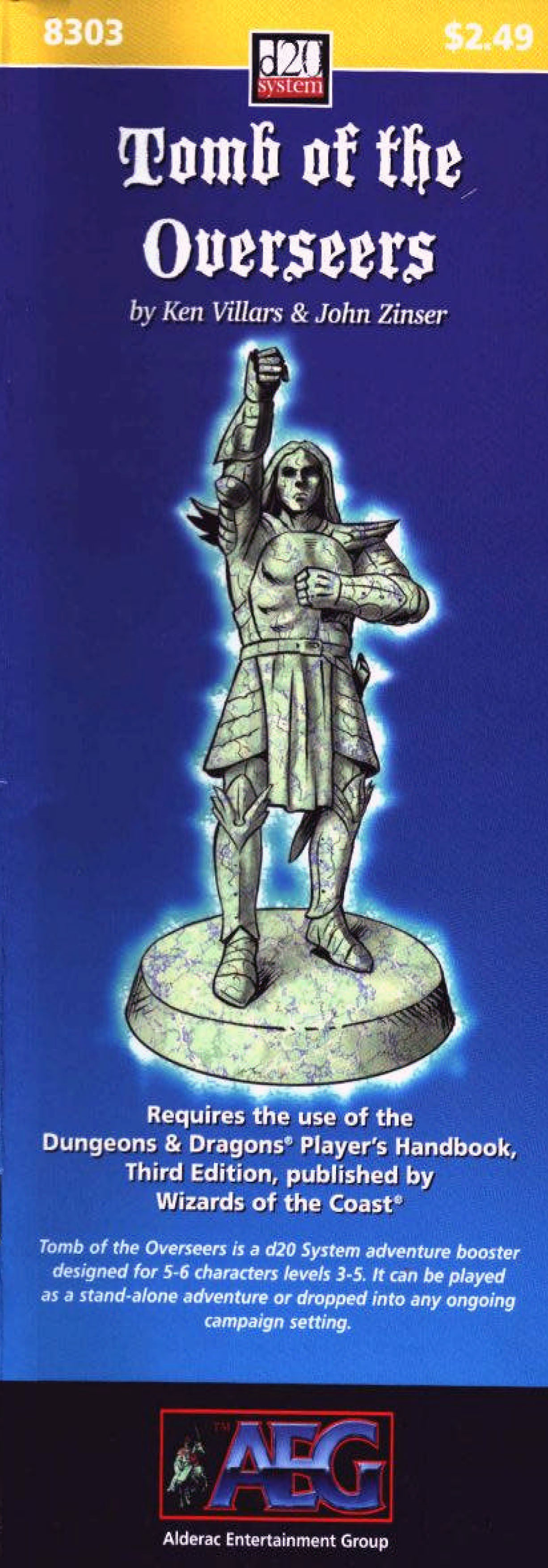 The background for Tomb of the Overseers is evocative: Nearly a century ago a paladin by the name of Lord Eriador led his people to freedom from a great evil. With the land freshly united he was called to continue his fight upon the higher planes, but he left an Overseer to watch over the land in his absence and promised that, if his land was ever in need of him again, he would return upon being summoned from Mount Anduin.
The background for Tomb of the Overseers is evocative: Nearly a century ago a paladin by the name of Lord Eriador led his people to freedom from a great evil. With the land freshly united he was called to continue his fight upon the higher planes, but he left an Overseer to watch over the land in his absence and promised that, if his land was ever in need of him again, he would return upon being summoned from Mount Anduin.
Now, with the Third Overseer upon the throne, the land is in trouble: An evil mage has sent forth his humanoid hordes to oppress the people. The mage has also filled Mount Anduin with foul creatures in order to prevent the people from calling upon their legendary champion. Although three parties have gone and never returned, it is hoped that the PCs will succeed where they failed.
The dungeon itself is, as I’ve noted, of excellent design. Although I would’ve liked to see a greater impact left behind by the three adventuring parties who came this way before, the complex nevertheless has a layered complexity that gives Tomb of the Overseers a nice dynamic during play. Basically there are three things at work here: First, the creatures left by the evil mage. Second, the natural guardians of this place (who will test the PCs to see if they are worthy of summoning forth Eriadon). And, finally, the puzzle of how to access the magical chamber from which Eriadon may be summoned.
The only flaw in this package is the back cover text and adventure hook (which casts the PCs as the long-time residents of Eriador’s country). I consider this to be unnecessarily intrusive upon the DM’s campaign, and a liability in terms of making the adventure truly flexible. Fortunately, this is neatly sidestepped by simply ignoring it.
At $2.49 this one is a definite steal.
(Tomb of the Overseers is designed for 5-6 characters of levels 3-5.)
AGAINST THE BARROW KING
Against the Barrow King is not as strong as Tomb of the Overseers, but is nonetheless well worth the meager price you’re being asked to pay.
 The premise: A village believes itself to be under attack by the disturbed spirit of the Barrow King, whose burial grounds (steeped in legend and superstition) are located only a few miles out of town. It is hoped that the PCs will be able to track down the Barrow King and rid the village of his plague.
The premise: A village believes itself to be under attack by the disturbed spirit of the Barrow King, whose burial grounds (steeped in legend and superstition) are located only a few miles out of town. It is hoped that the PCs will be able to track down the Barrow King and rid the village of his plague.
The twist: If the spirit of the Barrow King truly rests still within his burial ground, then it slumbers still. The village is actually being victimized by a cult of Vroodith, god of Slaughter, which has moved into the abandoned burial grounds.
That’s not much of a twist – but it adds spice to what is otherwise a straight-out dungeon crawl: The PCs go into the burial ground, root out the cult, and solve the village’s problems.
(Against the Barrow King is designed for 4-6 characters of levels 3-5.)
CLOSING NOTE
As a closing note, let me say that it’s nice to see a D20 producer who’s willing to jump immediately to mid-level adventures. With Atlas Games, Green Ronin, Necromancer, Wizards of the Coast, and several others already turning out high quality introductory modules, I don’t think it’s necessary to keep pumping more material into a market sector which has been safely sated for at least the next year.
Style: 3
Substance: 4
Title: Adventure Boosters: Tomb of the Overseers and Against the Barrow King
Writers: Ken Villars & John Zinser (Tomb of the Overseers) and Against the Barrow King (Steve Hough)
Publisher: AEG
Price: $2.49/each
Page Count: 16
ISBN: n/a
Product Code: 8303, 8304
As I mentioned last time, I had intended to review all of the AEG Adventure Boosters, but stopped after being hired by Fantasy Flight Games to write for their competing line of Instant Adventures.
I might not have finished the project in any case, as after the first batch, AEG published I believe two more batches, for a total of 40+ adventures. That’s a lot of adventures! These were later updated to the 3.5 rules and collected in the Adventure I and Adventure II compilation volumes.
For an explanation of where these reviews came from and why you can no longer find them at RPGNet, click here.

